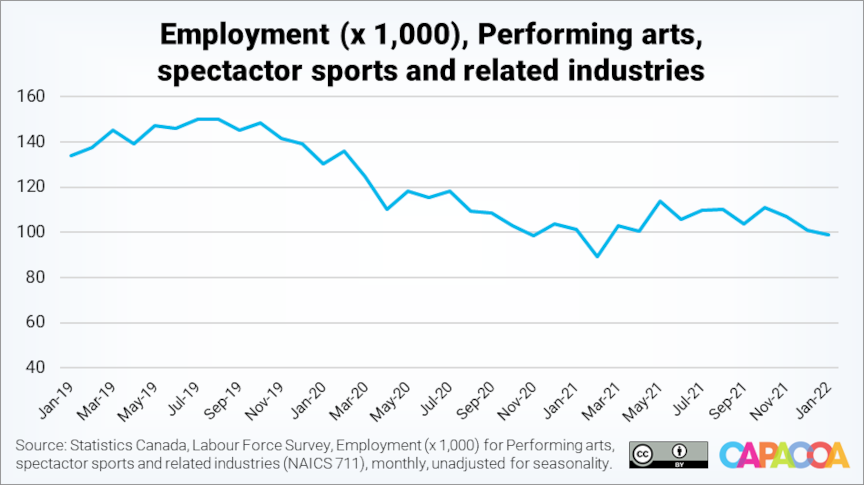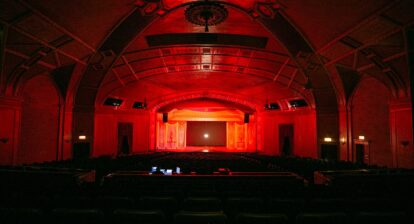Now that Ontario, Quebec, and most jurisdictions have announced plans for lifting their public health restrictions, performing arts workers are keeping their fingers crossed, hoping that they will be going back to business for good. But even if reopening plans proceed as promised, arts workers will be going back to business amidst a severely reduced workforce.
According to the Labour Force Survey, employment among performing arts, spectator sports and related industries (NAICS 711) declined for a third consecutive month in January 2022. From 111,000 jobs in October 2021, the subsector is now down to 98,700 jobs: an 11.1% decrease over three months. Promoters/presenters (7113) and independent artists, writers and performers (7115) experienced the most significant decrease, while the spectator sports industry group (7112) rebounded.
The Omicron wave leveled entertainment industries once more
These employment losses brought the performing arts subsector back to employment levels recorded during the first quarter of 2021. In other words, all employment gains realized throughout the second and third quarters of 2021 were wiped out, and the subsector is now back to square one.

Before the pandemic, back in 2019, the performing arts, spectator sports and related industries used to provide work to 143,600 Canadians.
Rebuilding a workforce of this magnitude will neither be an easy nor a quick task. Thankfully, temporary programs such as the Tourism and Hospitality Recovery Program and the Canada Performing Arts Workers Resilience Fund will help. But this sector will be in for the long run. Participants at the last CAPACOA town hall said they were laying out 3-year plans for their recovery. Will federal programs still be on their side beyond the 2022-2023 fiscal year?
The upcoming federal budget may tell.
About the Labour Force Survey and cultural statistics
- The Labour Force Survey is the most timely source of employment statistics in Canada. Statistical products from the Culture Satellite Account (for example, the National Culture Indicators) require more preparation time, but they are more narrowly focused and better suited to monitor arts, culture, heritage and sports activities over time.
- The “711 Performing arts, spectator sports and related industries” sub-sector is a larger industry grouping than the “Live Performance” domain used in the Culture Satellite Account, but it is a fair proxy that can be tracked over time. The 711 sub-sector involves activities that aren’t part of the live performance domain such as 7112 Spectator sports, as well as parts of 7113, 7114 and 7115. Definitions for each industry group are available in the North American Industry Classification System. More details on the mapping between NAICS 711 and the live performance domain can be found in the Classification Guide for the Canadian Framework for Culture Statistics 2011.
- Labour Force Survey statistics cited in this article are not adjusted for seasonality.
The Labour Force Survey in The Daily









Pingback: TAPA - Employment among arts and entertainment industries falls back to square one
Pingback: Affect, Accountability, and the Social Impact of the Arts – PhiLab